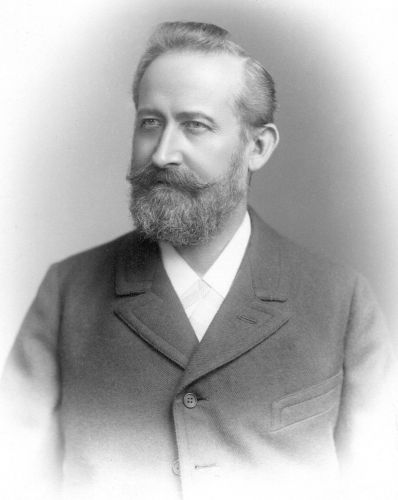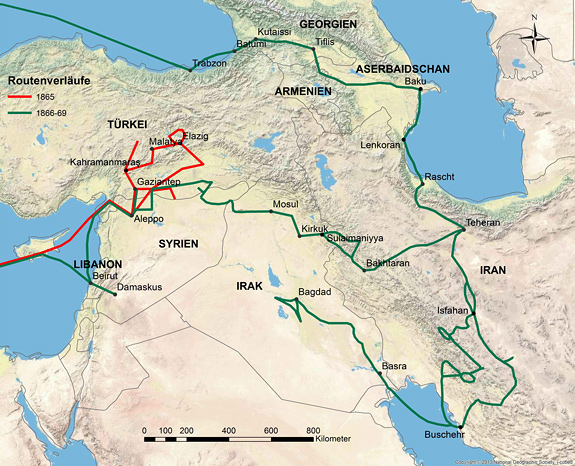
Duration: 01.05.2017-31.10.2022
Prof. Frank H. Hellwig
Herbarium Haussknecht, Friedrich Schiller University Jena
Academic Staff: Dipl.-Biol. Kristin Victor
Prof. Christoph U. Werner
Iranian Studies, Institute of Oriental Studies, University of Bamberg
Academic Staff: Christine Kämpfer, M.A.
Dr. Stefan Knost
Centre for Interdisciplinary Regional Studies (ZIRS)
Affiliated Researcher: Dr. Hanne Schönig
The Herbarium Haussknecht is of international importance. Founded by the Thuringian botanist Carl Haussknecht (1838-1903) on 18. October 1896 in Weimar and today housed at the Friedrich-Schiller-University Jena, its 3.5 million plant references also comprises several thousand samples that Haussknecht brought from his travels to the Ottoman empire and Persia (1865 and 1866-1869). His diaries provide the context for this collection, going well beyond what is known so far. The 15 octavo notebooks are densely written in Kurrent script, comprising all together 988 pages. Preliminary inspection and research proves that the information therein goes well beyond pure botany, covering a wide spectrum of disciplines like geology, geography, cartography, zoology, regional studies, social and cultural history and others, which are relevant for the contextual interpretation of the botanical material. Including the plant references that Haussknecht collected as well as many other archival material, among them a register and carte de visite photographs, allows the commented critical edition of the diaries, the contextualization of the starting collection of the herbarium, as well as the national and international recognition of Haussknecht as a person and his contribution to systematic botany and the development of oriental botany. The commented critical edition furthermore contributes to the history of science, culture and reception of the reion in the second half of the 19th century. The digital edition, which will be created in cooperation with the Thuringian University- and State Library Jena (ThULB), will allow the virtual connection of diary entries with the objects of the collection as well as archival and library material. The corresponding georeferenced maps will allow for a precise location of the plant references and for the reconstruction of the travel routes, which were in parts off the beaten track.
The interdisciplinary team of botanists of the Herbarium and oriental scientists with particular knowledge of the Ottoman Empire and Persia in the 19th century as well as numerous cooperation partners from further disciplines will identify and critically comment on names of plans, geographical naming, people and local events and conditions of high scientific and cultural historical relevance.
Carl Haussknechts Reiserouten (1865 und 1866-1869)

Credits: National Geographic Society, edited by Andreas Christoph, Jena (Carl Haussknecht. Ein Leben für die Botanik. Beiträge aus den Sammlungen der Universität Jena 2, Friedrich-Schiller-Universität Jena, 2013, Seite 29)
Carl Haussknecht‘s travel diary
Sample page (facsimile and annotated transcript) Ottoman Empire
Sample page (facsimile and annotated transcript) Persia
